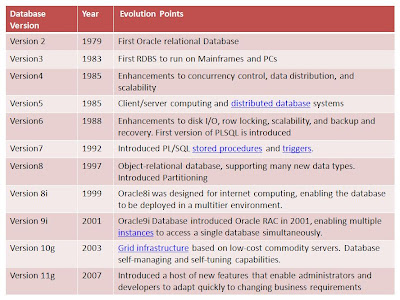Architecture Overview:
Oracle Applications R12 is Three Tired, consisting of
- Desktop Tier
- Application Tier
- Database Tiers
 |
| Three Tier Architecture of Oracle Applications |
Desktop Tier :
This is usually any Desktop or a Browser enabled system, that an end user can use to navigate to Oracle applications. In general for accessing core oracle application forms, the Forms client applet must be run within a Java Virtual Machine (JVM) on the desktop client. The Sun J2SE Plug-in component allows use of the Oracle JVM on web clients, instead of the browser’s own JVM. Generally the JVM is installed as a browser Plugin.
Other the JVM, the access should appear seamless once the user is within the Client's network.
For information on all supported JVM versions with oracle applications Click Here. For information on supported Browser versions click Here.
Note: In 11i , Jinitiator is used instead of JVM.
Middle Tier/ Application Tier:
For ease of understanding, we can say application tier comprises of one or more servers (Operating Systems), ontop of which Oracle applications software is installed. The software enables, Tech components for the application to run as well as application components that will enable user to access different applications.
The application tier has a dual role: hosting the various servers and service groups that process the business logic, and managing communication between the desktop tier and the database tier. This tier is often referred to as the middle tier.The application tier in R12, contains Oracle Application Server 10g (OAS10g). Three servers or service groups comprise the basic application tier :
- Web services: The Web services component of Oracle Application Server processes requests received over the network from the desktop clients.
- Forms services: Forms services in Oracle Applications Release 12 are provided by the Forms listener servlet or Form Socket mode, which facilitates the use of firewalls, load balancing, proxies, and other networking options.
- Concurrent Processing server: Processes that run on the Concurrent Processing server are called concurrent requests. When users submit such a request, either through HTML-based or Forms-based Applications, a row is inserted into a database table specifying the program to be run. A concurrent manager then reads the applicable requests in the table, and starts the associated concurrent program.
There are two versions of Oracle Application servers/ Oracle Homes used in R12:
- The Oracle Application Server 10.1.2 ORACLE_HOME is referred by Tools, C, or Developer Suite.
- The Oracle Application Server 10.1.3 ORACLE_HOME is referred by Web or Java applications.
Database Tier:
The database tier contains the Oracle database server, which stores all the data maintained by Oracle Applications. In other words, database tier is the place where all logical database objects like, tables, views, procedures, packages etc., are present along with the required applications data.
In addition the physical data files are also maintaned.
The database server communicates with the services and servers on the application tier, which mediate the communications between the database and the clients: there is no direct communication between the database and Clients.
I recommend this document to be referred by any one who is learning Oracle applications and thoroughly understand the concepts . For further information you can refer Oracle E-Business Suite Components.


